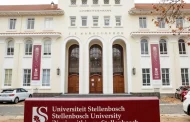By Prof Ibrahim Bello-Kano
It is noticeable that whenever a popular cleric dies, for instance, there’s the archetypal outpouring of grief. Does that happen because many mourners would sincerely feel that they would miss the departing cleric? Note that most clerics spent their career years talking about death and extinction in literal and graphic and metaphorical, even metaphysical, ways. And since we humans, if David Hume is right, have a natural fear of death, of extinction and permanent departure, I suspect that the massive hysteria and wailing and a sense of emotional and spiritual loss that usually erupt at the sudden death of a cleric must be accounted not as the praxis of loss but of the mourners’ own secret fear of death and extinction.
The mourners that throng the graveyard on such occasions are secretly or unconsciously or phastastically worried about their soon-to-be or waiting or pending or inevitable deaths. That is the secret psychology of death and mourning for the dead. In fact, many a mourner would momentarily be angry with the dead cleric for dying at a particular moment. Of course, that thought or emotional state does not last but is transmuted into the metaphysics of death and the hoped-for delights and potential undecidable risks of the afterlife. Soon after the burial of the cleric, the airwaves and the written word seek, unconsciously at first, to “resurrect” the dead cleric in images and fantastical details. For a moment, the dead cleric is cast in the bright light of angelic shapes and phantasms. Yet I cannot but sense that the whole emotional saga is not about the dead cleric but our own deaths, abd which the cleric had devoted his career to espousing, discoursing, emphasizing and prescribing.
The Good Death that the cletic had spent a life time talking about has finally arrived in the form of a death, a funeral proceeding, a burial, and a prayerful solemnity. Thus there’s more than a death but deaths with a thousand convulsive and emotional cuts. The curtain draws on this death but would potentially go on to other scenes and other psychic dreads and propylexes. So there we have it and there we go: deaths by a thousand cuts, a thousand commentaries, and a thousand psychic dreads of impending extinction in very personal terms. Thus the symbology of a mass of mouners at a small and growing graveside is the extent to which we humans deeply fear death and our prospects in the propedeutics of the afterlife/postlife that the clerical discourse is all about. Let’s call all this the “Discourse of Death Under a Canopy in a Graveyard”.





























1 Comments
Pingback: Critics Take on Prof. IBK’s “Symbology and the Discourse of a Death” - Intervention